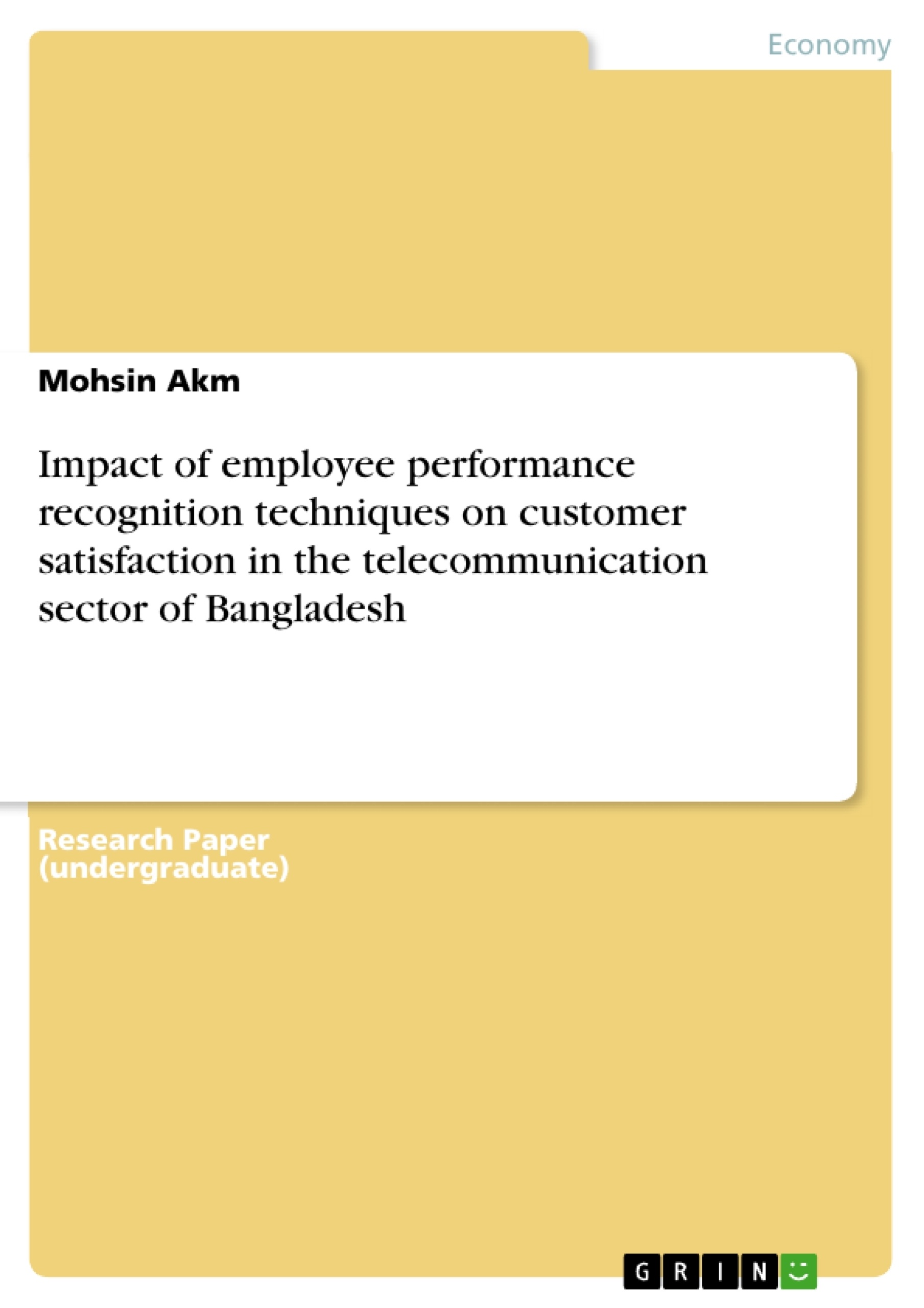The telecommunications industry in Bangladesh is a very competitive market. As customer loyalty is always shifting to the service provider whose service is comparatively better, customer satisfaction is a crucial issue to survive in this market. Companies like Grameenphone, Robi, and Airtel have been trying to achieve their goal of increasing customer satisfaction by using performance recognition techniques on their employees. This is due to the fact that only the employees of a company are in a position to improve the customer satisfaction level, since they are in direct or indirect contact with customers.
This report will therefore focus on the impact of employee recognition techniques on customer satisfaction in the telecommunication sector of Bangladesh. The report has been divided into two parts. The first part will contain the literature review and the conceptual frame of the study. In the second part, the very crucial part of methodology will be examined. The survey finally will include 30 respondents from whom primary data will be collected. The researcher has also decided to use the convenience sampling method for fulfilling the purpose of this research.
Frequently asked questions
What is the title of the research?
The title of the research is "The impact of employee performance recognition techniques on telecommunication sector in Bangladesh."
What is the abstract about?
The abstract discusses the importance of employee performance recognition in achieving organizational goals and improving customer satisfaction, particularly in the competitive telecommunication industry of Bangladesh. It highlights the connection between employee recognition, motivation, and customer loyalty.
What are the key themes covered in the language preview?
The key themes include:
- Employee performance recognition techniques
- Customer satisfaction
- SERVQUAL Model
- The impact of employee recognition on customer satisfaction in the telecommunication sector in Bangladesh
- Research methodology
What does the Table of Contents include?
The Table of Contents outlines the report's structure, covering topics such as the background of the problem, literature review (including employee performance recognition, customer satisfaction, SERVQUAL model, and impact analysis), research methodology (including research questions, paradigm, approach, design, and data collection methods), and references.
What are the objectives of the research?
The objectives are to assess the impact of employee performance recognition techniques on service quality and customer satisfaction within the telecommunication industry in Bangladesh.
What is the research methodology employed?
The research methodology involves a combination of qualitative and quantitative methods. It utilizes a positivism research paradigm, a deductive approach, and a descriptive research design. Data will be collected through online surveys and in-depth interviews.
What sampling method is used in the research?
The research uses convenience sampling, a non-probability sampling method, due to constraints in time and resources. A sample of 30 respondents is selected from Dhaka.
What statistical tools are used for data analysis?
Data analysis involves simple descriptive statistics (percentage, mean, weighted mean, standard deviation) and Z-tests. Cronbach's Alpha test will also be used for the consistency of the data.
What is the hypothesis of the research?
The hypothesis is:
- H0: There is no Impact of employee performance recognition techniques on telecommunication sector in Bangladesh.
- H1: There is a significant Impact of employee performance recognition techniques on telecommunication sector in Bangladesh.
What are the limitations of the research?
The research is limited by accessibility issues, such as respondent availability and willingness to participate. It's also limited to select respondents in Dhaka, Bangladesh.
- Citation du texte
- Mohsin Akm (Auteur), 2015, Impact of employee performance recognition techniques on customer satisfaction in the telecommunication sector of Bangladesh, Munich, GRIN Verlag, https://www.grin.com/document/353864



